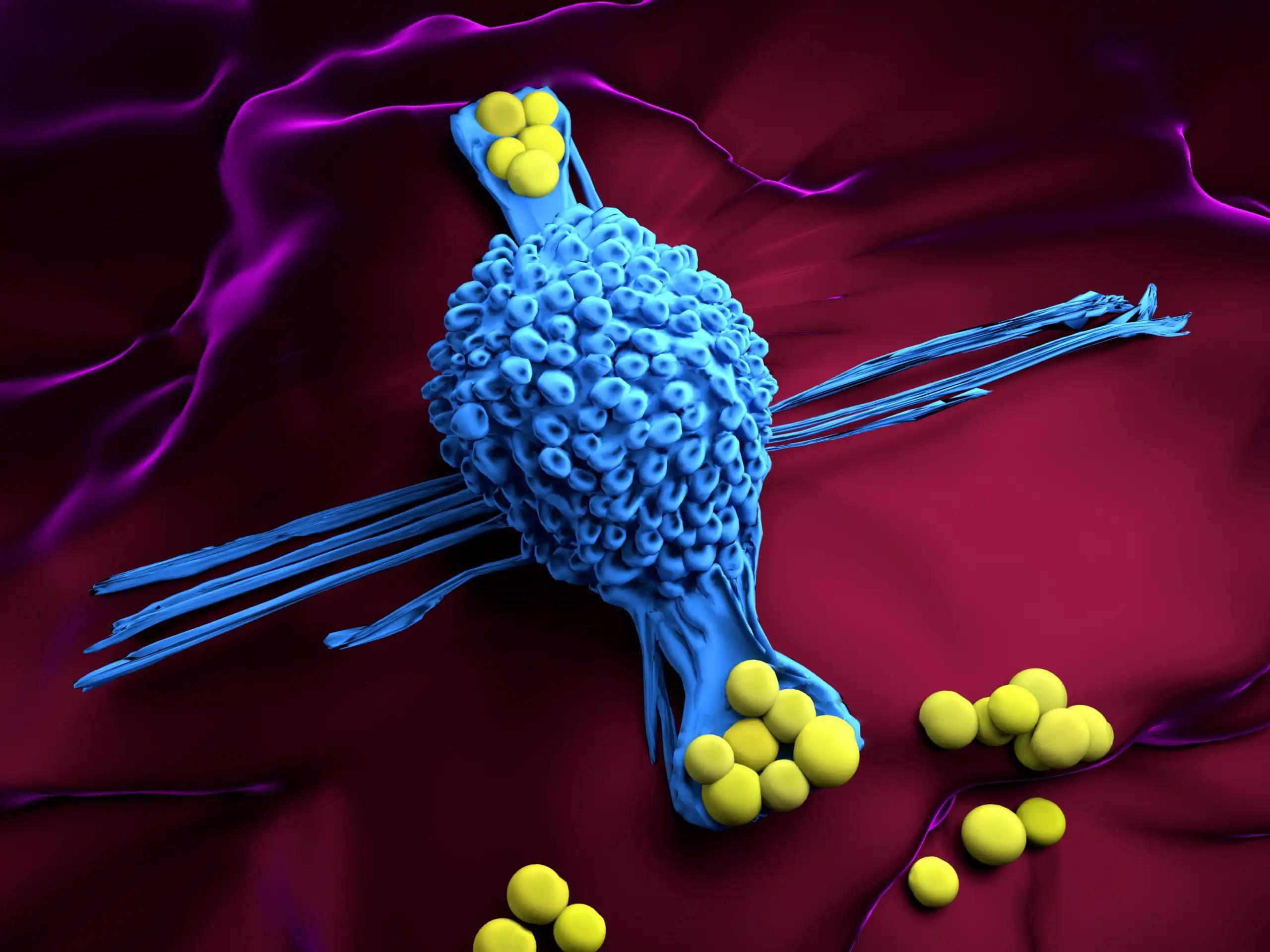KEY TAKEAWAYS
- The phase 2 trial aimed to evaluate adding local consolidative therapy to systemic maintenance in treating oligometastatic NSCLC.
- The primary endpoint was PFS.
- The results revealed that adding LCT to IO-based first-line therapy showed a PFS HR of 0.90; optimizing selection and reducing toxicity is key.
First-line therapy options for patients with advanced non-small cell lung cancer (NSCLC) without actionable molecular alterations include immunotherapy (IO) with or without chemotherapy or chemotherapy alone.
Puneeth Iyengar and the team aimed to assess the benefits of adding local consolidative therapy to systemic maintenance therapy for patients with oligometastatic NSCLC.
Eligible patients had metastatic NSCLC with 3 or fewer extracranial metastatic sites (excluding primary) and exhibited at least stable disease after four cycles of first-line systemic therapy. Participants were randomized 1:2 to either maintenance systemic therapy or LCT (radiation and/or surgery) followed by maintenance systemic therapy until progression, death, or intolerable toxicity. Stratification factors included histology and immunotherapy use.
In the randomized phase II (RPhII) portion of the study, the primary endpoint was progression-free survival (PFS) with a planned decision analysis after 216 individuals were enrolled and 138 PFS events were observed. Secondary endpoints included overall survival (OS), quality of life (QoL), and toxicity. The RPhII portion was designed to provide at least 95% power to detect a PFS HR of 0.60 at a one-sided significance level of 0.15, with the phase III portion proceeding only if the estimated HR was less than 0.83.
NRG-LU002 accrual began in April 2017 and was suspended in November 2021 when the RPhII portion sample size was met. Following the planned interim analysis, the study was closed in December 2023.
Overall, 215 individuals (81 in the maintenance systemic therapy arm, 134 in the LCT + maintenance systemic therapy arm) were enrolled from 68 sites, with a median age of 65 years (40-86). The cohort was 77% white, 95% with a performance status of 0/1, 78% with non-squamous histology, and 90% having received IO-based systemic therapy. Median follow-up among all/surviving individuals was 21.9/29.4 months, respectively.
With 138 PFS events from both arms, the estimated 1-year and 2-year PFS rates were 48% (95% CI: 35.9, 59.0) and 36% (95% CI: 24.8, 47.2) in the maintenance systemic therapy arm and 52% (95% CI: 42.5, 59.8) and 40% (95% CI: 31.5, 48.6) in the LCT + maintenance systemic therapy arm, respectively (2-sided log-rank test p-value = 0.66). The corresponding HR was 0.93 (95% CI: 0.66, 1.31).
Among the 185 individuals treated with IO-containing regimens, the PFS HR was 0.90 (95% CI: 0.61, 1.32). The OS HR between the two arms was 1.05 (0.70, 1.56) among all individuals and 1.05 (0.68, 1.63) among IO-treated individuals.
For adverse events reported as definitely, probably, or possibly related to treatment, there were more LCT + maintenance systemic therapy individuals with overall grade 2 or higher toxicities (73% vs 84%) and grade 3 or higher pneumonitis (1% vs 10%).
The study concluded that adding LCT to IO-based first-line systemic therapy was associated with a PFS HR of 0.90. Reducing toxicity and increasing biologically driven patient selection may optimize this therapeutic ratio.
The trial was sponsored by NRG Oncology.
Source: https://meetings.asco.org/abstracts-presentations/232878
Clinical Trial: https://clinicaltrials.gov/study/NCT03137771
Iyengar P, Hu C, Gomez DR, et al. (2024). “NRG-LU002: Randomized phase II/III trial of maintenance systemic therapy versus local consolidative therapy (LCT) plus maintenance systemic therapy for limited metastatic non-small cell lung cancer (NSCLC).” Presented at ASCO 2024, J Clin Oncol 42, 2024 (suppl 16; abstr 8506), DOI: 10.1200/JCO.2024.42.16_suppl.8506 (8506)



